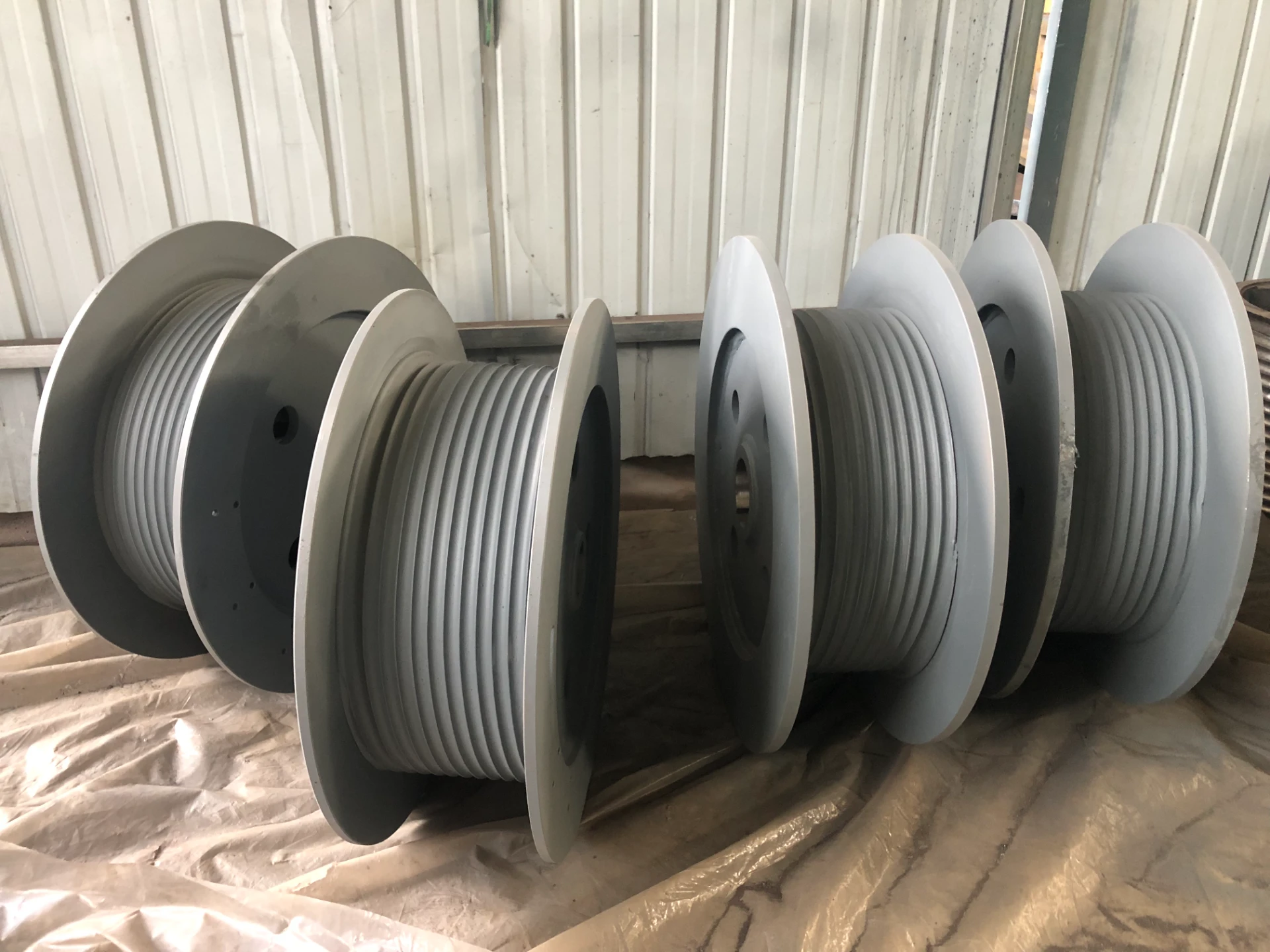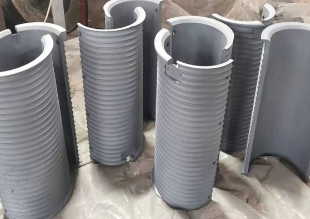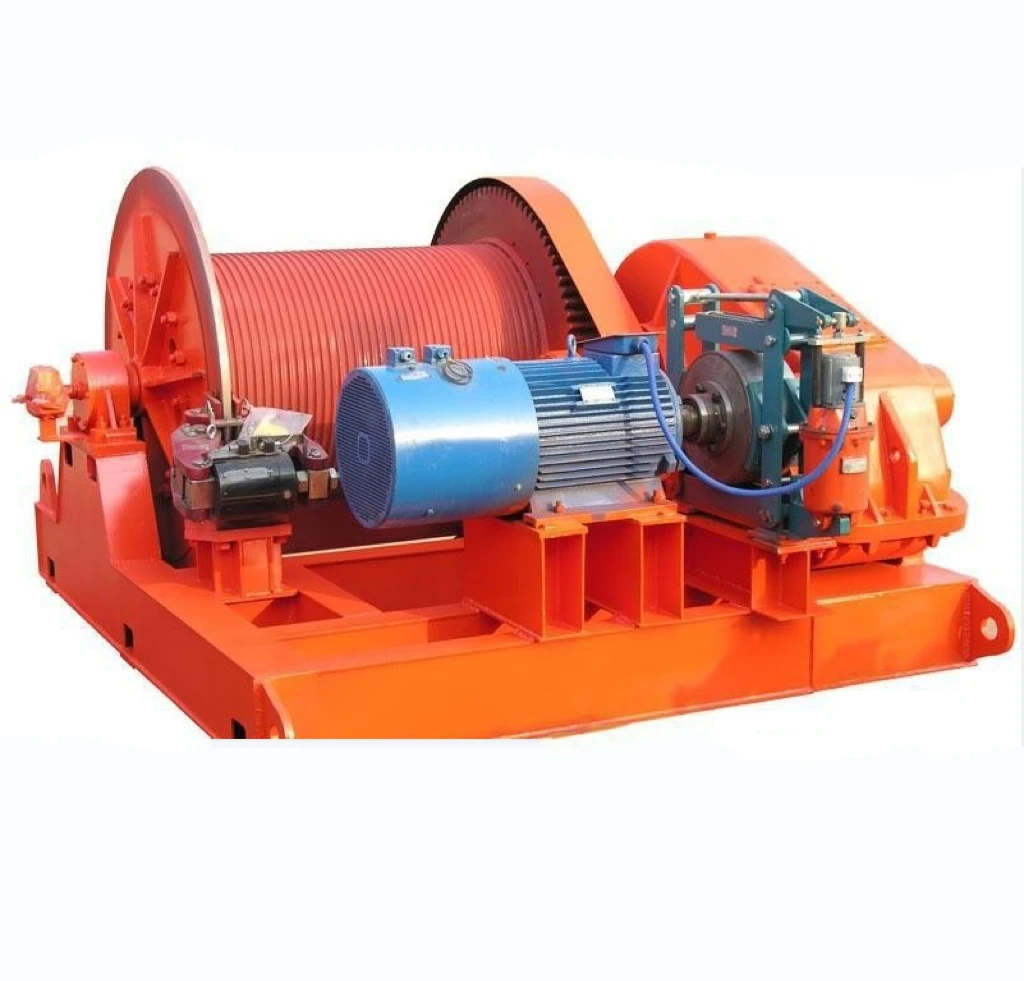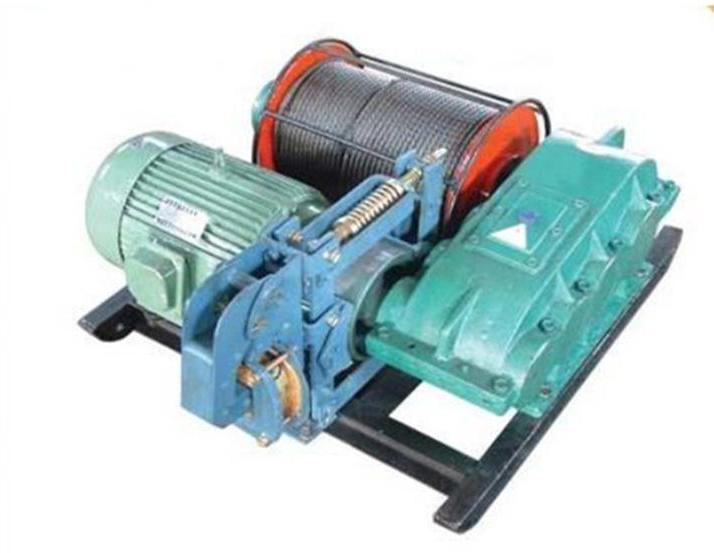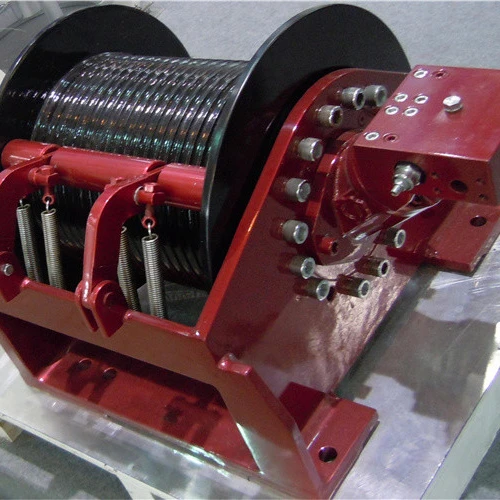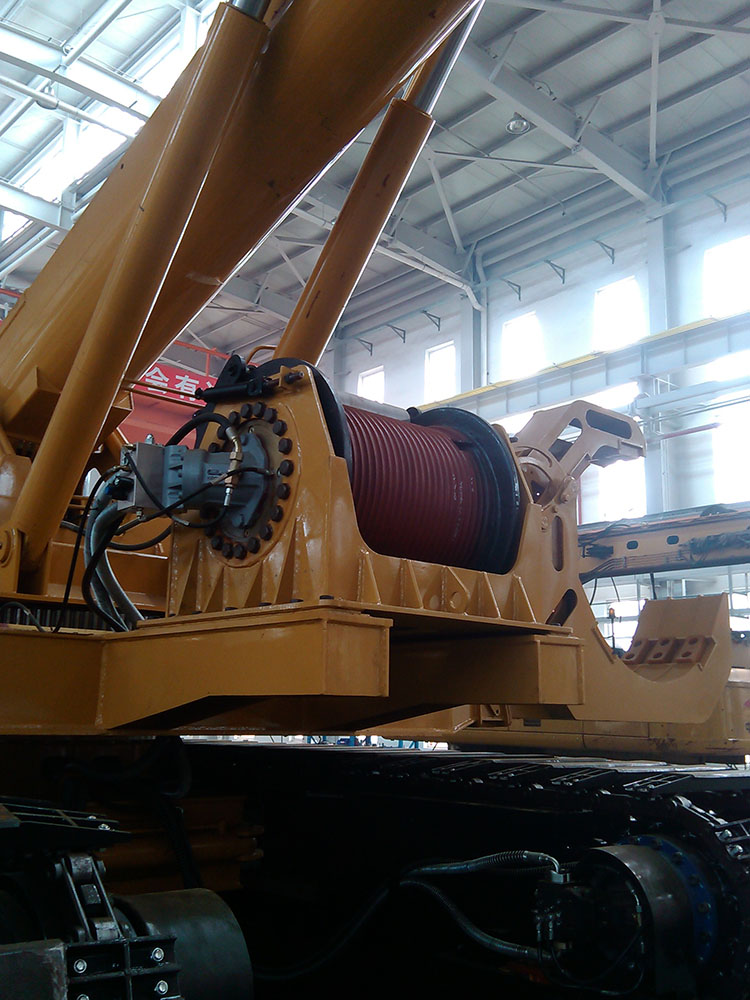Electric Over Hydraulic Winch: Efficient, Durable Lifting Solutions for Modern Industry
Why Electric Over Hydraulic Winches Matter in Today's Industrial Landscape
In a world increasingly focused on efficiency and sustainability, the electric over hydraulic winch is quietly revolutionizing sectors from construction to disaster relief. These devices combine the finesse of electric control with the brute force of hydraulics, offering an appealing hybrid that’s globally relevant. Understanding this technology is essential—not just for engineers or operators, but also for businesses aiming to improve safety, reduce costs, and boost sustainability in their operations.
Over the past decade, sectors relying on heavy-duty lifting and pulling have faced a consistent puzzle: how to maintain power and control while minimizing fuel use and emissions. According to ISO standards and World Bank industrial reports, integrating electric systems into hydraulic platforms produces measurable gains in efficiency and user safety. Not to mention, it often addresses the rising demand for greener manufacturing and operations.
Understanding What an Electric Over Hydraulic Winch Really Is
At its core, an electric over hydraulic winch is a winching system that uses an electric motor to drive a hydraulic pump, which in turn powers the hydraulic motor or actuators to move the winch drum. This combo means operators don’t directly rely on diesel or gas engines for mechanical power, but on electric energy feeding hydraulics. Essentially, it’s hydraulic muscle operated with electric precision.
This setup has become a go-to for industries requiring strong torque under controlled conditions—think offshore drilling rigs, heavy machinery transport, and emergency rescue operations where reliability and safety literally mean life or death. And oddly enough, its electric over hydraulic design often allows better integration with digital monitoring systems, making maintenance and troubleshooting easier.
Key Components and What They Mean for Practical Use
Durability That Withstands the Toughest Jobs
Electric over hydraulic winches are crafted to be rugged. The hydraulic system’s sealed nature protects critical parts from dust, moisture, and extreme temperatures, which is crucial in harsh environments like deserts or offshore platforms.
Precision Control
Because the system’s power derives from an electric motor controlling hydraulic pressure, torque and speed can be finely adjusted. This is invaluable when lifting delicate loads or performing rescue operations where a sudden jerk could cause damage or injury.
Energy Efficiency
Many engineers have noted a roughly 15–25% increase in fuel and energy efficiency compared to traditional, purely hydraulic winches. Electric motors can be powered from a variety of sources, including renewable energy setups, which aligns very well with global sustainability goals.
Scalability and Integration
Whether installed on a small utility vehicle or a massive crane, electric over hydraulic winches scale nicely. Their modular construction allows for customization, whether that's higher pulling capacity or more compact designs for urban infrastructure builds.
Cost Efficiency Over Time
Initial investment might be slightly higher than conventional winches, but savings over time from reduced maintenance, fuel costs, and downtime often offset the upfront expense. This long-term view is essential for businesses planning sustainable asset management.
Real-World Applications Across the Globe
This technology is far from theoretical. For instance, in the aftermath of natural disasters like earthquakes or hurricanes, electric over hydraulic winches allow rapid deployment of relief equipment and safe clearing of debris—especially when fuel supplies are disrupted. In remote mining operations, like those in Australia’s Outback or Canada’s far north, these winches are critical for moving heavy machinery with minimal local emissions, preserving fragile ecosystems.
Major NGOs operating in Southeast Asia also rely on these winches for setting up temporary structures in flood-prone areas, where reliable power sources are scarce but heavy lifting needs are urgent. Oddly enough, the quieter operation of electric over hydraulic systems also means less noise pollution—a small but appreciated benefit in often densely populated relief zones.
Advantages That Go Beyond Numbers
- Safety and Predictability: Operators can count on smooth starts and stops, reducing accidents and equipment wear.
- Environmental Impact: Lower emissions and compatibility with clean energy sources make these winches a preferred choice for eco-conscious firms.
- Reliability: Many users report fewer breakdowns and streamlined maintenance schedules thanks to intelligent electric controls.
- Social Impact: Safer and more efficient equipment means projects finish faster, helping communities sooner with less risk.
Frankly, the mix of tangible savings and less quantifiable emotional benefits—like the trust operators place in reliable gear—make electric over hydraulic winches a favorite for tough jobs worldwide.
What’s on the Horizon: Future Trends in Electric Over Hydraulic Winch Technology
As industries digitize, expect electric over hydraulic winches to become smarter. Emerging tech includes IoT-enabled sensors that monitor strain and temperature—feeding data back in real time to prevent failures. Green energy integration, like pairing with solar or battery storage, is also picking up.
Manufacturers are experimenting with advanced composite materials to lower weight without losing strength, and AI-powered control systems promise to automate winching tasks completely, reducing human error. Policies pushing lower carbon footprints and safer workplaces are fueling rapid development in this niche.
Challenges and the Road Ahead
Of course, no technology is perfect. Users sometimes note the higher initial costs and the complexity that can come with integrated electric-hydraulic systems. Maintenance requires technicians skilled in both electric and hydraulic domains—a rare breed. But innovative training programs and modular repair kits are closing that gap.
Battery technology, although improving, still limits the use of fully electric winches in extremely remote or power-scarce areas. Hybrid solutions, including the electric over hydraulic winches, remain a practical middle ground until energy storage leaps ahead.
Quick FAQ About Electric Over Hydraulic Winches
Q1: How does an electric over hydraulic winch differ from a purely hydraulic or electric winch?
A: The electric over hydraulic winch uses an electric motor to power hydraulic systems, combining benefits like better control, efficiency, and flexibility. Purely hydraulic winches rely on diesel engines and are less energy-efficient, while purely electric winches often lack the power needed for heavy industrial applications.
Q2: Are electric over hydraulic winches suitable for outdoor, harsh environments?
A: Absolutely. Their hydraulic components are well-sealed and durable, protecting against dust, water, and extreme temperatures. This makes them ideal for offshore, mining, and construction sites.
Q3: Can these winches be integrated with other digital monitoring systems?
A: Yes, many models come with IoT-ready features allowing real-time monitoring of load, temperature, and performance metrics, which enhances preventive maintenance and safety.
Q4: What about the cost – is it affordable for small to mid-sized companies?
A: Initial costs tend to be higher, but total cost of ownership can be lower thanks to energy savings and reduced downtime. Leasing and financing options are also becoming more common to ease upfront expenses.
Q5: How do I choose between electric over hydraulic vs purely hydraulic winches?
A: Consider load requirements, energy availability, and operational environment. Electric over hydraulic winches offer a versatile balance for many, especially where control, efficiency, and sustainability matter.
Product Specification Table: Typical Electric Over Hydraulic Winch
| Feature | Specification |
|---|---|
| Max Pulling Capacity | 20,000 lbs (9,072 kg) |
| Motor Power | 15 kW Electric Motor |
| Operating Voltage | 480V AC / 60 Hz |
| Line Speed | 0 - 30 m/min (variable) |
| Weight | 350 kg (770 lbs) |
| Hydraulic System Pressure | 2500 PSI |
| Control Interface | Wireless Remote & PLC Integration |
Vendor Comparison: Popular Electric Over Hydraulic Winch Manufacturers
| Vendor | Pull Capacity | Power Supply | Control Type | Typical Industries |
|---|---|---|---|---|
| LBS Winch Co. | Up to 25,000 lbs | Electric / Battery Hybrid | Wireless Remote & PLC | Construction, Mining, Offshore |
| HydroTech Winches | 15,000 lbs | Electric Only | Wired & PLC | Industrial, Rail |
| EcoWinch Solutions | Up to 18,000 lbs | Solar-Electric | Wireless & IoT | NGO, Remote Sites |
Wrapping It Up: Why Investing in an Electric Over Hydraulic Winch Makes Sense
So, taking the long view, electric over hydraulic winches are more than just tools; they’re part of a global shift toward smarter, cleaner, and safer industrial operations. Whether you’re involved in heavy construction, mining with ecological sensitivity, or humanitarian projects where every resource counts, this technology offers proven benefits.
Next time you consider upgrading or purchasing a winch system, keep in mind how this hybrid solution can align with your goals for safety, sustainability, and efficiency. For more details, and to explore tailored solutions, do visit electric over hydraulic winch — trusted partners in modern winching technology.
Mini Summary Takeaways:
- Electric over hydraulic winches combine energy efficiency with durability and precision.
- Globally, they help sectors and NGOs upgrade operations sustainably and safely.
- Technology is advancing rapidly with IoT and green energy integration.
- Despite challenges like higher upfront cost, long-term savings and safety add great value.
References
-
Double Drum Hydraulic Winch – Durable, Efficient Load Handling SolutionsNewsNov.25,2025
-
Hydraulic Drum Winches: Powering Heavy Lifting with Precision and DurabilityNewsNov.24,2025
-
Hydraulic Driven Winch – Reliable Heavy Lifting Solutions for Industry & ReliefNewsNov.24,2025
-
Hydraulic Crane Winch – Powerful & Precise Heavy Lifting Solutions | LBS WinchNewsNov.23,2025
-
Hydraulic Logging Winch Guide | Global Applications & InnovationsNewsNov.22,2025


